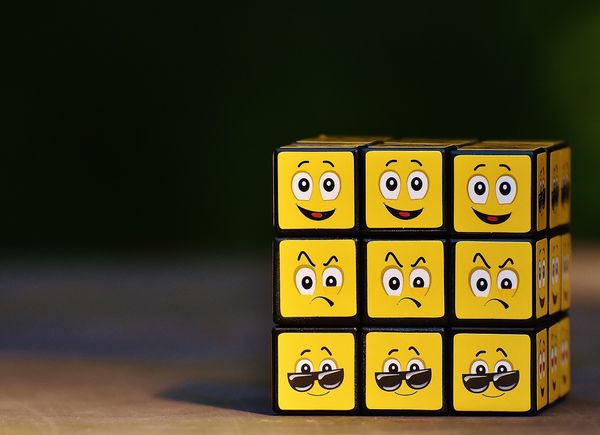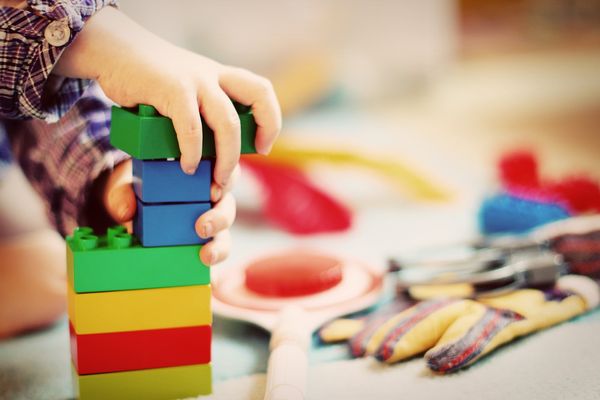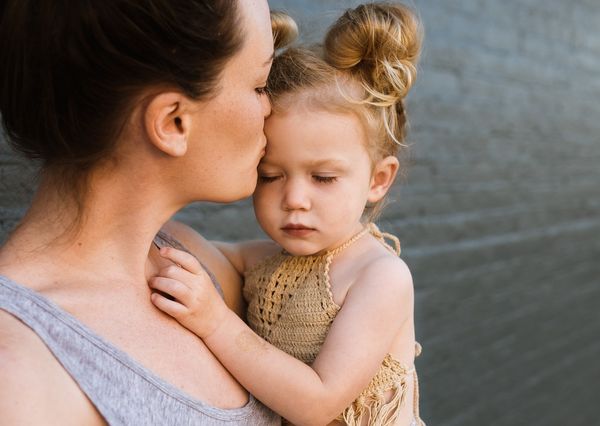Level Five, Love

Greetings to all caring parents. As a quick reminder, we've already explored four levels of attachment and a wealth of theoretical information.
Today, we'll start with theory as well. I want to share with you two invitations for our children.
As you already know, secure and safe attachment is a necessary condition for nature to do its work in maturing our children. Children grow and develop not because of specific actions we take but because it's nature's plan. We can't influence this process, but we can create all the necessary conditions for nature to work effectively and smoothly.
Gordon Neufeld calls attachment, our relationships with children, the womb for psychological development. What a fitting comparison! When we carry our children in the womb, it provides everything they need: security, tranquility, comfort, warmth, food, and so on. The conditions in which the little one develops in the womb depend on us. However, on the other hand, we only create conditions; we can't influence the child's development. We can't choose eye or hair color, decide how quickly the baby will develop, and so on.
The same goes for after birth. Our task is to create the necessary conditions and believe that nature will do the rest.
Two essential invitations for a child's personal development are feeling invited to exist in our lives and to be themselves.
Let's look at each of them. What does it mean to invite a child into our lives? To understand this, it's helpful to try this invitation on ourselves. How do you feel when other people (spouse, parents, relatives, friends) invite you into their lives, and conversely, when you feel unwelcome? This experiment may not be easy because it's not always straightforward to see how those close to us may not give us the invitation we dream of. But it helps a lot to look at relationships through a child's eyes.
We can understand and feel that the invitation to exist in our lives may look like eyes full of love that the child sees when looking at us. Or perhaps it's that we accept the child as they are right now, not just when they meet our expectations. It could be that we always find a moment to hug and listen. Or that we share our hobbies with the child. It might be that we genuinely listen to one of their endless stories and maybe even write one down for memory. Or that we let the child sit on our lap while we finish an article on the laptop or share our tea, even if we wanted to drink it ourselves. Or that we help the child get dressed, even though they can do it themselves. And, of course, it means filling the child on all the levels of attachment that matter to them.
In other words, manifestations of this invitation can be very diverse. The main thing is for the child to feel loved, welcomed, always and in any mood. That they are a real wonder and happiness. It also means that we try very hard not to let the child feel unwanted, superfluous, too loud, too quiet, indecisive, shy, annoying. We don't transmit to the child that we can't stand them, can't handle them, that they are too much for us. Although, in reality, it periodically happens. But knowing how painful it is to feel "too much" or "not enough," we look for ways to keep our thoughts and feelings to ourselves and not transmit them to our children.
The second invitation we give to our children is to be themselves, directing their energy not towards us but towards themselves or the external world. Picture this: we fill the child with contact, something goes inside them, they feel calm and safe, and then they explore themselves, our world, and their place in it. Something comes out of them; they direct their energy away from us. They can try, make mistakes, not meet our expectations, experiment, change, and change the world.
It's essential not to confuse this with a specific "separation" or "push for independence" that is often practiced nowadays. We are not pushing the child away. In fact, the golden rule is to provide more contact, not less. We never refuse help, never say, "figure it out yourself," "it's time for you to be responsible," and so on. On the contrary, we create a sense that we are always there and ready to help, that we won't go anywhere as long as they need us. Surprisingly, the more we invite children to depend on us and rejoice in this contact and communication, the more they desire to be independent and self-sufficient.
So, at the same time, we are open to the fact that children are moving away from us. We are ready to let them be independent as soon as they show a willingness to try. We let toddlers drink from a cup themselves if they reach for it. We allow a child to imperfectly wipe the floor or wash their shoes if we see such initiative. We let a child stay at home while we go to the store because they don't want to go right now and believe they can manage 15 minutes without us (every mom probably remembers those first times when you almost run home from the store but outside, you convey trust to the child and believe that they can handle it).
This is one part of the invitation to be oneself: allowing the child to become physically independent of us. But there is another part: allowing children to become psychologically independent of us. And this is also very challenging. But we try to give space for the child's desires, thoughts, and mistakes. All of this without judgment, without "I told you so." It doesn't mean that we always have to agree with the children or fulfill all their desires. But the fact that we think they have too many toys doesn't mean we forbid the child from wanting new toys. We allow the child to have their taste and preferences, even if we don't understand them. Yes, we may not like this pink purse, but there's no need to shout across the entire store, "I will never buy this monstrosity, choose something else." Instead, it's better to listen to ourselves and our intuition and, if the child genuinely likes it and it's essential to them, why not allow it? After all, it will be our little one carrying that purse, not us. And perhaps, thanks to the bag, they will remember us with gratitude.
Psychological separation happens in the same way as attachment development. Gradually, if the contact is reliable, babies can allow themselves to move away from us, even to the other end of the room. Later, they can allow themselves to differ from us, not always be on our side, not love what we love, not share our hobbies, and not always listen to us to find their own will (without fearing that this might threaten our relationship). So, no matter how unexpected this idea may be now, children who are securely attached to us are not the ones who always strive to be like us in everything, always follow us, always want to be important to us, and always do something to make us feel their love. No, gradually, as attachment strengthens, it gives them space not to fear separation on previous levels.
This doesn't mean they will always strive to differ, argue, or hide all their secrets from us. Throughout their lives, they will still want to feel contact and closeness with us on all levels of attachment. It's just that if we give both invitations to our children, they won't be afraid to separate, disappoint us, or fear that their process of becoming might harm our relationship. That's the beauty of these two invitations. And it's truly a lifelong journey. Being close but not closing off personal development with our parental frameworks, expectations, and not wanting the child to merge with us on all levels of attachment.
And one more thing. These two invitations are more like our goal, our star in the sky, which we follow step by step. No one can ever give their children such invitations 100%. We are all human, we get tired, feel helpless at times, make mistakes, and we all carry our own experiences left to us by our parents with their invitations. Sometimes this experience undoubtedly helps, and sometimes it puts obstacles in the way. So, there's no need to twist yourself, blame yourself, feel guilty, or think that nothing is working out for you. It is. You are already on the right path.
I hope that was helpful and clear, and now let's talk about the fifth level of attachment. The level of love, emotional closeness. Isn't that a beautiful name? And it's a lovely period. This level begins to develop at the age of 5, and during this time, our homes are filled with drawings of hearts, heart-shaped crafts, and our kids are constantly expressing their love to us, even hinting at wanting to get married to us (if we haven't proposed on the third level of attachment yet:)) By the way, I don't remember if I wrote about this or not. But the desire of a child to marry us is entirely normal. There's no sexual context or competition with our spouses, as some parents might think. In this desire, only a very vivid desire to be together forever is visible. So, there's no need to come up with clever responses; it's enough to say, "I'm your mom forever, I will always love you" and make the child believe it.
But let's get back to the fifth level of love. At this time, children want to feel our love and strive to do something to make us feel their love. On this level, the words "I love you" spoken by our child are not just repeating after us; it's a conscious declaration of love.
Now, how can we fill our children with love at this level? We can say "I love you," play games where we tell how much and in various situations we love our child, sing love songs, draw hearts, make heart-shaped crafts, and decorate everything with hearts, from clothing to food. Look at our child with eyes full of love. Speak with love in our voice, try not to speak nervously (although sometimes it's very, very difficult) because it gives the feeling "they don't love me, they're not happy to see me." By the way, this is the first invitation I mentioned earlier; it's all about love. You can also think about how we feel love from others and try to see how exactly our child feels our love.
It's also important, especially when talking about our children with others (especially if the children see it), to do it with love. Write love notes and messages. For older kids, you can send text messages or pictures about love. Leave drawn hearts on mirrors or slip in drawings into their pockets. You can have halves of hearts in the form of drawings or a pendant: one for mom and one for the child.
Smile at your child more often. A smile can often express a lot of love.
Now, how can we fill our loved ones? Basically, everything that works with children works with our loved ones when we think about them ? All those notes, hearts, drawings on mirrors, or lists of "100 reasons why I love you." The same smiles, eyes full of love, and the voice with which we "embrace" our loved ones. The same text messages and emails just to say "I love you," not to complain about the child (not this time), but just to say "I love you." Also, pay attention to how your partner feels and perceives love.
Attachment Theory: Why It Matters for You and Your Child
Level One Attachment: All About the Senses.
Level Two - Similarity: Continuous Contact and Possession.



